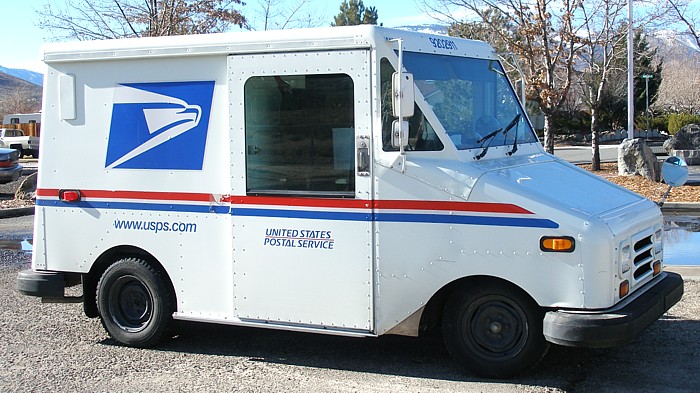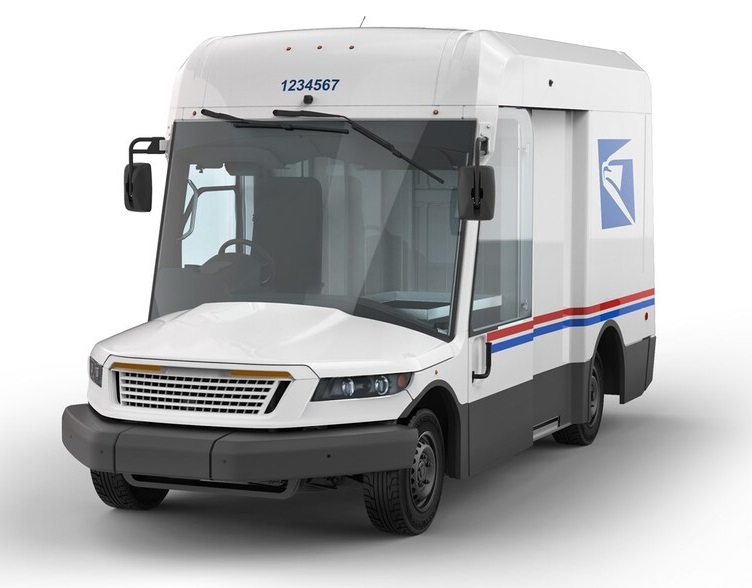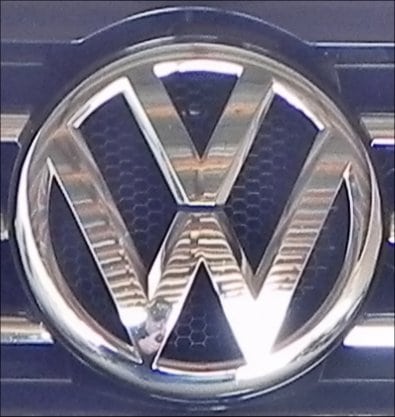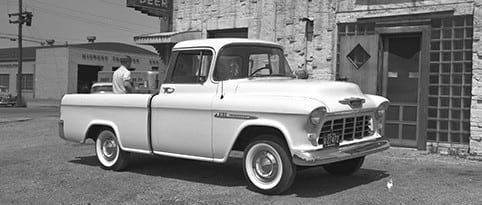We’re all familiar with the little right-hand drive, sliding door white vans that deliver our mail. The Grumman LLV is now as iconic as its Jeep Dispatcher predecessor. More than a hundred thousand of these trucks were made and most of them are still operating on our streets everyday.
The Grumman LLV (Long Life Vehicle) was originally contracted to last for about 24 years. The first of them were made 37 years ago. So the USPS definitely has gotten their money’s worth out of this truck. It’s due to begin replacements this year as the new Oshkosh Defense NGDV trucks begin production.
Back in the early 1980s, the US Postal Service was looking to replace the long-running Jeep DJ-5 (known as the Dispatcher). The design requirements were fairly simple in written form, but not so simple in execution. The USPS needed a vehicle that could do “mounted delivery” (delivery from curbside), was easily serviceable for minimal downtime, could steer and maneuver well in confined areas, and that was economical in operation.
Testing for the new postal delivery vehicle commenced in 1985 at a Texas proving ground. For reference, this was the year WrestleMania debuted. Though these two facts are probably not related.
Several options for the new USPS truck were presented by various vehicle makers including Fruehauf, American Motors, and Grumman (who’d partnered with General Motors). Prototypes underwent severe start-stop service tests that totaled over 24,000 miles on various road surfaces including gravel, dirt, cobblestones, and pavement. And while carrying payloads of around 2,000 pounds. Like Mr. T throwing Rowdy Roddy Piper around at WrestleMania, it was really no contest.

Grumman used its previous experience with experimental vehicles for the USPS to design what would ultimately become the LLV. Based on the Chevrolet S-10 pickup truck chassis, the LLV used an aluminum body for light weighting and to provide a more durable, rust-free body. The truck’s design had the front wheel track narrower than the rear to give tighter turning and used a GM-supplied 2.2-liter four-cylinder “Iron Duke” engine and three-speed transmission. Later, a 2.5-liter engine was used as the Iron Duke upgraded. The entire truck’s curb weight was just 2,700 pounds.
Grumman won the contract with the USPS and produced about 140,000 of the LLV trucks from 1987 to 1994. Which happens to coincide with Star Trek: The Next Generation’s tenure on TV. Also probably not related.
Grumman’s factory in Pennsylvania was responsible for most of the truck’s assembly, peaking production at 95 units per day. With the exception of the short-lived and much less common Ford Utilimaster FFV, which was introduced in 2000 for a year of production, the Grumman LLV is the only purpose-built postal delivery truck on the road today.
As of 2010, there were about 140,000 Grumman LLVs still in postal service operation. Today, that number is reduced to about 100,000 units. These are expected to be replaced over time with the new Oshkosh NGDV, which enters production this year, as the Grumman is phased out over the next several years.
The friendly little postal truck we’ve all known for most of our lives has been around longer than it was expected to be. It’s delivered mail for decades and, while it has its quirks, it has done its job well. The Grumman LLV is an icon for a generation of Americans.
And looking at the goofy kindergarten-drawing shape of its replacement, we can almost feel sorry for the upcoming generation and what they will remember as mail trucks. It’ll be forever tied to the year of King Charles III’s coronation. A political happenstance which may not be related.







